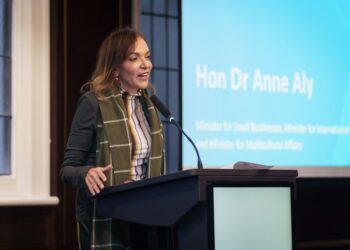Recent delays in the overhaul of the US H-1B visa system, coupled with new rules for protecting F-1 students, have raised significant concerns among migrants and international students. This comprehensive analysis delves into the reasons behind these delays, the implications for foreign workers and students, and potential measures to address these challenges.
Historical Context of the H-1B Visa
The H-1B visa allows US companies to employ foreign workers in specialty occupations, particularly in technology, engineering, and medicine. However, the current system has faced criticism for its inefficiencies and for not meeting the evolving needs of the labor market.
Reasons for the Delays
Legislative and Administrative Hurdles
The delays in the H-1B visa system overhaul can be attributed to several legislative and administrative hurdles. Complex immigration policies, bureaucratic inefficiencies, and political disagreements have all contributed to the slow pace of reform.
Impact of the COVID-19 Pandemic
The COVID-19 pandemic has further exacerbated delays, disrupting normal administrative functions and shifting government priorities. The need to address the public health crisis and its economic fallout has sidelined immigration reform efforts.
Implications for Foreign Workers and Employers
Workforce Shortages
Delays in the H-1B visa system overhaul are causing workforce shortages in key industries. Many US companies rely on highly skilled foreign workers to fill critical roles, and these delays hinder their ability to attract and retain top talent.
Uncertainty and Instability
The uncertainty surrounding visa approvals and renewals creates instability for both employers and foreign workers. Workers face the constant threat of visa expiration, while employers struggle with workforce planning and project continuity.
F-1 Student Protection Rules
New Protective Measures
In response to growing concerns about the safety and well-being of international students, new F-1 student protection rules have been implemented. These rules aim to enhance security, provide clearer guidelines for compliance, and ensure that students can continue their education without undue stress.
Impact on International Students
While these measures are intended to protect students, they also introduce new challenges. Increased scrutiny and regulatory requirements can complicate the visa application process, potentially discouraging prospective students from choosing US institutions.
Potential Solutions and Recommendations
Streamlining Administrative Processes
To address these delays, it is crucial to streamline administrative processes. This could involve adopting modern technology solutions to expedite application processing and reduce bureaucratic bottlenecks.
Legislative Reform
Comprehensive legislative reform is necessary to create a more efficient and responsive immigration system. This includes revising outdated policies, increasing visa caps, and providing clear pathways for visa holders to transition to permanent residency.
Enhancing Support for International Students
Enhancing support for international students involves not only protective measures but also providing resources to help them navigate the complexities of the US immigration system. Universities and colleges should offer robust support services, including legal assistance and mental health resources.
The delays in the US H-1B visa system overhaul and the introduction of new F-1 student protection rules present significant challenges for foreign workers, students, and employers. By addressing legislative and administrative inefficiencies, streamlining processes, and enhancing support for international students, the US can better meet the needs of its global workforce and academic community.











